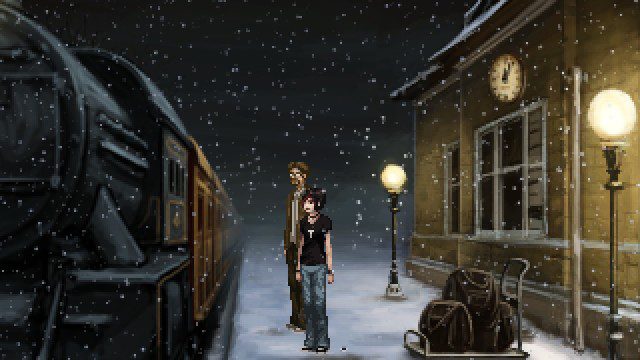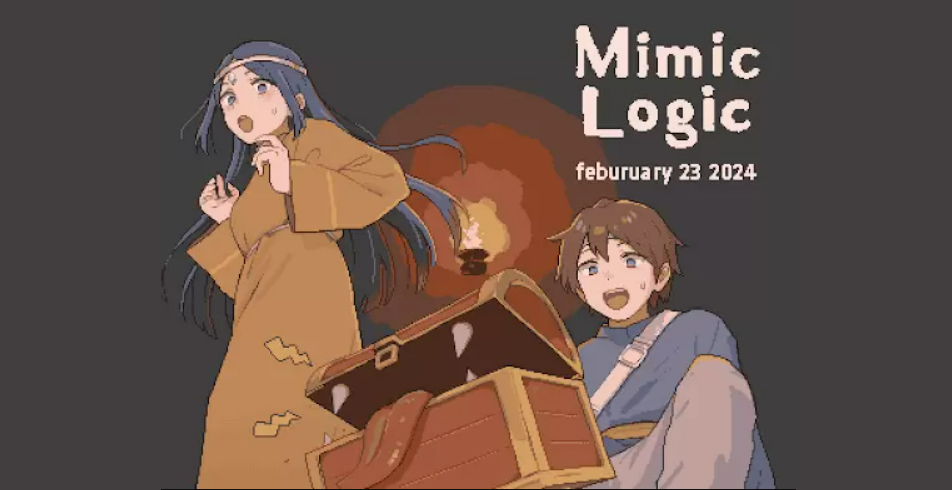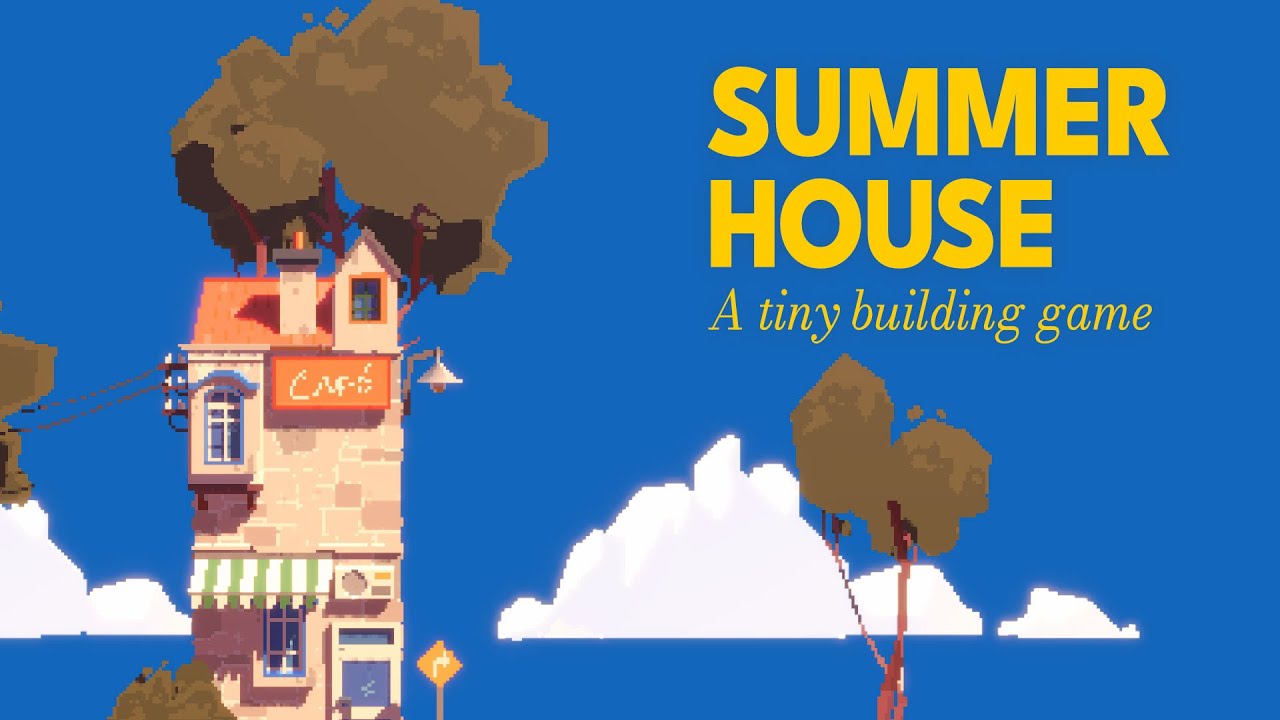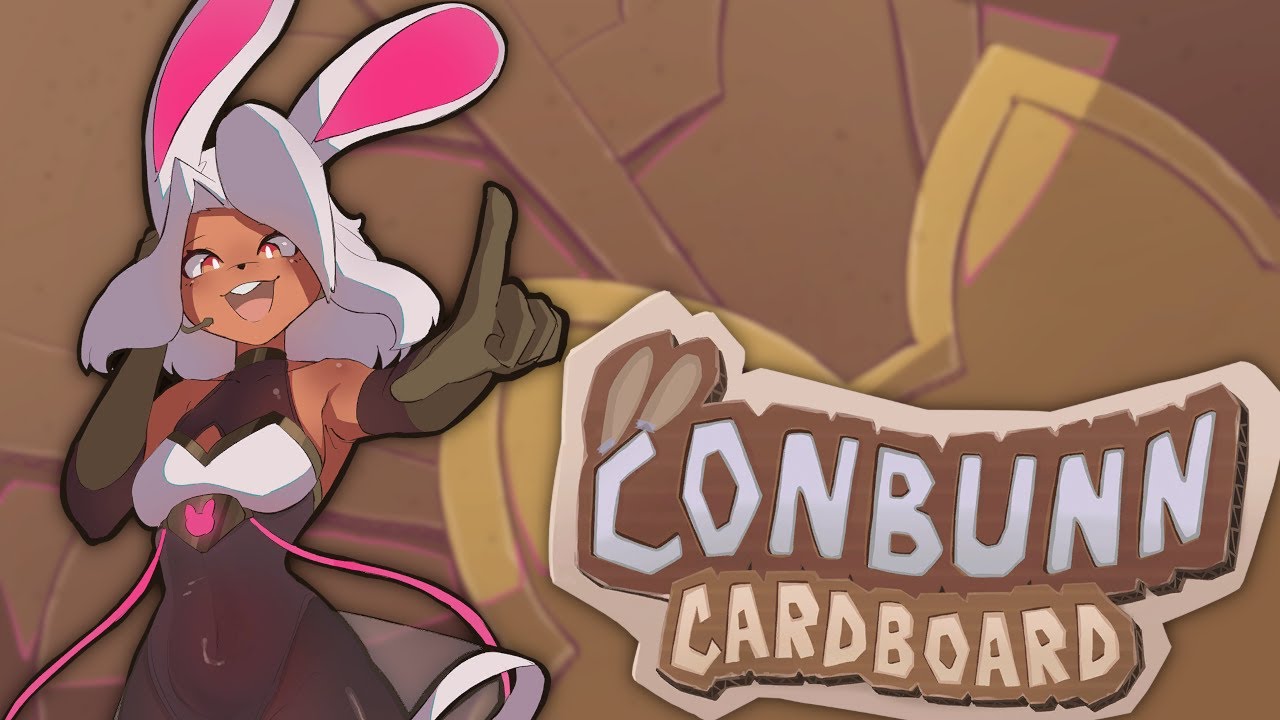Refreshing! It’s not often a game comes across my desk that is so simple, yet has such an impact on an emotional as The Charnel House Trilogy. These are the moments that I live for in this business. Sure, it’s nice seeing these big AAA games that have marketing budgets that shove trailer after trailer down our collective throats, but when something unexpected comes out of nowhere, that’s when I get really excited.
So, I have to go into this review mindful of the score you see above. The Charnel House Trilogy is a lovely piece of artistic work, but it will not be for everyone. Heck, it might not even be for people of the genres it pulls from. The Charnel House Trilogy is a retro inspired point-and-click adventure game done in pixel form. I’ve seen adventure games and action games call back to those early days, but The Charnel House Trilogy is the first that actually looks like it belongs in that bygone era of gaming and not just using it as a crutch.
The graphics at times are big and chunky with the menus and the like looking like you zoomed to far on an image in Google image search. In fact, before I knew what I was getting into I tried fidgeting with the graphics settings thinking something was broken. Needless to say, once I accepted the game for the style it was trying to capture, I loved the entire style it presented. If you take some of the screenshots from this review and showed them to an old adventure game fan, they would ask how they missed this game back in the day.
The Charnel House Trilogy has a charm to its presentation that is unlike so many games that attempt the same thing. It’s not simply “retro” just for the sake of being “retro”, instead it uses the style to draw you into a world that simply would not have worked as well in a 3D polygon based adventure (see and Telltale game). Instead of trying to make something above them, the team takes what they know and craft an effective story around the games limitations. I’ve always said that limitations are important, especially when it comes to game design. Too many games have too many cooks in the kitchen working with engines that are out of this world. And too many times we get gorgeous looking games that are fundamentally flawed under all the makeup.
The gameplay is also simplistic in its implementation. You control everything with your mouse, pointing and click where to move your character, and on objects to interact with them. The Charnel House Trilogy keeps the game’s world very small by design. You almost get this feeling of claustrophobia when moving about because the areas are so tight. While this may sound like a knock against the game, it works in its favor from a design perspective. The game is a very linear experience, but it gives you enough wiggle room to explore your surroundings.
You won’t be going on any huge quests that end with a litany of insta-kills as you would in an old Sierra game, but instead the gameplay is there to supplement the story. The Charnel House Trilogy was clearly built with a story in mind as opposed to showing of new tech, or to wow the pants off of investors. It’s not the kind of game that a boardroom of company heads would approve in the current age we live in. As with most adventure games you’ll find yourself collecting items and solving puzzles. This is all par for the course, but The Charnel House Trilogy won’t have you wracking your brain, or reaching for a walkthrough guide.
The game is laid out in a very logical manner. You aren’t going to find any obtuse puzzles that require you to think outside the box. Rather, you’ll encounter situations that rely on common everyday sense. If a door needs to be opened, you’ll find a key nearby, if a NPC requires a task finished, it’ll be clearly laid out and so on. This helps with the immersion as you’ll connect with the characters as opposed to yelling at the screen for them missing or not doing the obvious. The narrative is what is front and center here, but instead of something like a visual novel where you don’t do anything, you are actually taking part in the adventure along with the cast of wild, yet strangely relatable characters.
You take control of Alex, a woman in her mid 20’s living in New York (although the game and most of its cast sound and make British references). She is your typical woman who has a checkered past and an uncertain future. As the game progress we learn more about her history, in bits and pieces, but also becomes exposed to a much larger world that is beyond anything she can comprehend. This isn’t some fairy tale adventure game, instead The Charnel House Trilogy is a very dark and horror centric point-and-click. Alex will have to deal with some incredibly dark demons of her own and come to terms with a situation that would make some of the worst episodes of Criminal Minds look like kids stuff.
The game handles its dark subject matter in a very “real” way, opting to make it part of the story and not the story. You won’t feel bad for Alex because the game tells you to be sad for her, instead the writing builds connections and lets you get inside these characters. It’s far too often that games use women as nothing but a means to an end, but here it really feels like the writers understood how to make it work without coming off with Alex looking like some damsel in distress (God, I really hate that term).
But it must be said that The Charnel House Trilogy isn’t without some issues that may keep some players away. The game bills itself as a trilogy, and it is, but the three books on the title menu essentially amount to three chapters. It’s a very short game and chances are you are going to beat it in a single sitting even though the title implies otherwise. There is also no real reason to go back and play any of the chapters again as I don’t think there is anyway to get a game over while playing. The Charnel House Trilogy really does play more like a visual novel at it’s core and that may turn players away. If anything, I’d recommend this to casual gamers that are looking for a little more meat to their games, but aren’t looking for something to lose all their days to.
Sound is another shaky part to this whole affair. The music itself is fantastic and really sets the mood as you play. The sound effects are also on point with the requisite sounds fitting to where you are as well as some nice background touches to the whole thing. The problem comes in the voice-over work. The main cast is great, with Alex’s neighbor Rob really being the standout. It should be noted that Rob is played by Jim Sterling, the famed video game critic, but I didn’t know this until after my initial playthrough; Although his voice did bug me at first because I knew it from somewhere. Likewise, Alex is exceptional, as well as a few others, but some of the voices just aren’t up to the quality they need to be.
Many character voices clearly sound like they were recorded at different locations with different equipment and run through different editing programs. There was a point where I was in the middle of a very important scene and each character that was in the same room sounded like they were using different mics. It was pretty jarring and something that nearly killed that entire scene. There were also several other times when it was clear that a second take should have been given. This was only an issue because the main cast was so strong that it made everyone with a smaller secondary role stick out.
At the end of the day though, The Charnel House Trilogy comes highly recommended and at only $5.99 on Steam it is easily worth the price. I should also note that the game isn’t over yet and that the story we get is much bigger than those involved. The game ends with a huge cliffhanger that sets up a followup adventure that will hit sometime in 2016. Here’s to hoping that The Charnel House Trilogy is just the beginning to something even bigger and better.















